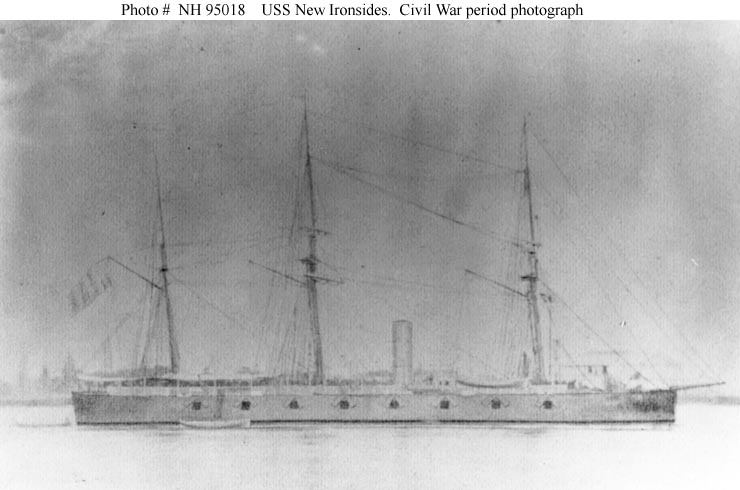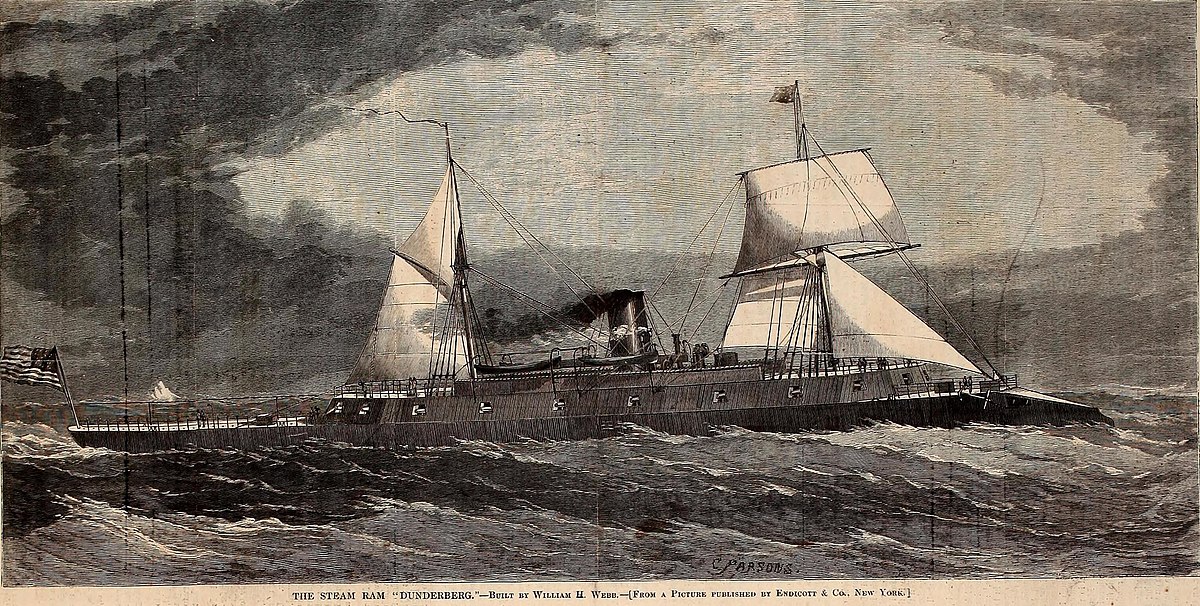USS New Ironsides, a 4120-ton broadside ironclad, was built at Philadelphia, Pennsylvania. The last, and largest, of the initial group of three "salt-water" armored warships begun in 1861 in response to meet the needs of the Civil War, she was commissioned in August 1862. Initially fitted out as an armored frigate, she was the first American seagoing ironclad and soon was stripped of her rigging, acquiring a curiously modern appearance as a consequence. Many innovations in the areas of gunnery, protection (armor), and seaworthiness made this ship far ahead of any ship of its time. Originally named USS Ironsides, the name was changed to USS New Ironsides only one month prior to her launching to avoid confusion with the wooden frigate USS Constitution’s nickname “Old Ironsides.” Classified as a frigate, she was intended to be a “blue-water” warship but rarely had her rigging in place during the war. In many ways, she was a better equipped and more useful warship than any of the highly publicized monitors. Within seven months after the contract was signed the New Ironsides was steaming to Charleston. Splendid white oak timbers were used in her construction. There were 120 timbers in it, each 38 feet long, 22 inches wide, and 12 inches thick, all cut within 25 miles of Philadelphia in the middle of winter, and after the contract was signed. No white oak for ship-building may be found there now, but the iron mines and the forges and the furnaces took its place. The New Ironsides had a slightly sloping armor of 4 inches of wrought-iron on her sides, and the armor served her well. The vessel was of 3580 tons displacement, had a speed of 1O knots, was 255 feet long, 56 feet broad, 12 feet deep. USS New Ironsides, a first generation ironclad, was launched two months after the famous battle between USS Monitor and CSS Virginia in 1862, and served with distinction until the end of the Civil War. The innovative turret design of John Ericsson’s USS Monitor influenced American naval construction for decades after its draw with CSS Virginia in Hampton Roads. USS New Ironsides’ much greater ability to deliver and receive punishment with its fourteen 11-inch Dahlgren smoothbores and two 150 pound Parrott rifles may have changed the outcome of this famous battle had she been delivered two months earlier. Although USS New Ironsides was unique and capable, she was the only one of its class; in contrast, “monitor mania” resulted in fifty ships. Following a lengthy fitting-out period, she joined the South Atlantic Blockading Squadron in January 1863. For the next year, she operated in support of the blockade of Charleston, South Carolina, and took part in several attacks on the Confederate fortifications defending that city. New Ironsides's heavy broadside battery of eight heavy guns on each side, coupled with her iron protection, made her a uniquely valuable ship for bombardment purposes. She took more hits from enemy guns than any other Federal ship but did not lose a single man to them. hers endurance was unmatched; she maintained uninterrupted blockade duty for sixteen months during the siege of Charleston, South Carolina. The veteran ironclad, probably the most powerful warship of her era, was destroyed by fire in December 1865. On the night of December 15, 1866, while in mothballs after decommissioning at League Island Navy Yard, Philadelphia, New Ironsides burned to the waterline and sank, the victim of an unattended stove.









